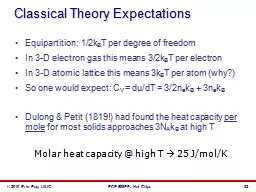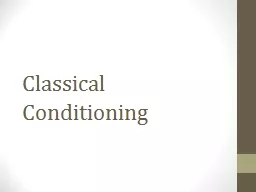PPT-Classical Theory Expectations
Author : jane-oiler | Published Date : 2018-03-14
Equipartition 12k B T per degree of freedom In 3D electron gas this means 32k B T per electron In 3D atomic lattice this means 3k B T per atom why So one would
Presentation Embed Code
Download Presentation
Download Presentation The PPT/PDF document "Classical Theory Expectations" is the property of its rightful owner. Permission is granted to download and print the materials on this website for personal, non-commercial use only, and to display it on your personal computer provided you do not modify the materials and that you retain all copyright notices contained in the materials. By downloading content from our website, you accept the terms of this agreement.
Classical Theory Expectations: Transcript
Download Rules Of Document
"Classical Theory Expectations"The content belongs to its owner. You may download and print it for personal use, without modification, and keep all copyright notices. By downloading, you agree to these terms.
Related Documents














